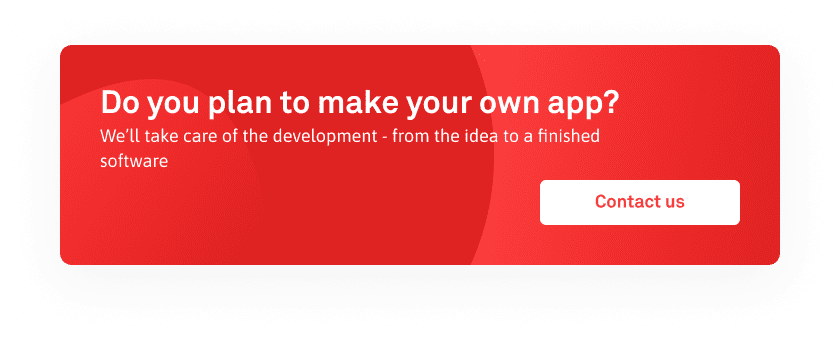If you’ve considered having a mobile app built recently, you’ve likely heard about the importance of UI/UX design. While this might seem like a complicated concept on the surface, it’s rather easy to grasp once it’s broken down in layman’s terms.
UI/UX design is essentially the combination of two design strategies — user interface (UI) design and user experience (UX) design. Recent studies have shown an increased demand in mobile apps that satisfy these consumer needs, leading UI/UX design to become one of the most crucial parts of any mobile app.
To help you better understand what UI/UX design is, we are going to break down what’s involved in the process, why your mobile app needs it, and how you can get the most out of it.
What is user interface (UI) design?
User interface (UI) design is going to refer to the look and feel of your mobile app. Presentation is everything when it comes to mobile apps and it’s ultimately what will grab the attention of the user. After all, when a user runs your software, you want them to have an instant “wow” response.
In order to implement proper and quality UI design into your mobile app, you must take every visual, image, logo, font, color scheme, button, icon, etc. into consideration. These will all play a minor role in the grand scheme of things.
What is user experience (UX) design?
On the other hand, user experience (UX) design will refer to how well users are able to interact with your mobile app. With quality UX design, you’ll present the user with an engaging experience, easy navigation, and a mobile app that doesn’t require a lot of brainpower to use.
Where the goal with UI design was to grab the attention of the user and please them aesthetically, the goal of UX design is to create a memorable experience that incentivizes the user to continue using your app.
Why does your app need UI/UX design?
For those that are trying to find a way around the UI/UX design process, you might want to reconsider your strategy. A mobile app that neglects the UI/UX principles will be doomed for failure. Even if people start downloading your app, it won’t remain on their device for long.
The truth is, UI/UX design isn’t just a demand in today’s mobile app community — it’s a requirement. If you’re still wondering what these principles can do for your mobile app, we’ve outlined the top-five benefits with UI/UX design:
- First Impressions – they often say first impressions are the most important and the same can be said about mobile app users. If you want to leave a good first impression, you’ll need a quality user interface.
- Lasting Impressions – while first impressions are sure to get any mobile some downloads, lasting impressions are what convert those downloads into loyal users. This is where user experience will work its charm.
- Getting Featured – quality UI/UX design will bring your mobile app to new heights. With more downloads and positive reviews, the app will eventually get noticed by the app store. A featured app is one that’s at the top of its class, so this is a goal for any app.
- Less Frustration – no mobile app can hide from UI/UX design. If you don’t take care of it initially, you’ll have to eventually work it in during later updates anyways. Taking care of it now will save you the time and money down the road.
As you can see, UI/UX design is essential to any project. Before you know it, everyone will be talking about your app and it will essentially market itself. Wouldn’t that be nice?
How can you get the most out of UI/UX design?
Now that you have a much better understanding of what’s involved in the UI/UX design process, we want to leave you with some of the best practices we’ve been utilizing in our projects.
By utilizing these principles in your own mobile app, you can start to give your users the app experience they were hoping for when they downloaded it. Let’s take a look:
- Don’t get too fancy with buttons, icons, colors, and symbols. Use elements the user will be familiar with.
- When designing a mobile app for different devices and operating systems, do your best to maintain uniformity throughout.
- If you’re hiring a mobile app developer, ensure they have expertise with UI/UX design.
- Interaction is key to a solid user experience. Don’t be afraid to spark a connection between the user and the app.
- Never let the design of your mobile app sacrifice the speed of your app. Keep in mind, the speed will play a role in user experience.
- Simplicity over complexity is always preferred. Don’t make things more difficult for the user.
- Know who your user is, build a persona for them, and create the mobile app for them — not for you.
One final tip when it comes to UI/UX design, always stay on the lookout for the newest trends in this field. Voice-based user interfaces, foldable and split screens, variable fonts, and “Dark” mode are just some of the trends we are seeing take shape in 2020.
For more information on UI/UX design and why it’s so important during mobile app development, contact us at CodeBright to speak with one of our highly trained professionals. We take UI/UX design very seriously and would love to share its benefits with you.
—
Photo by shutter_o on Shutterstock



